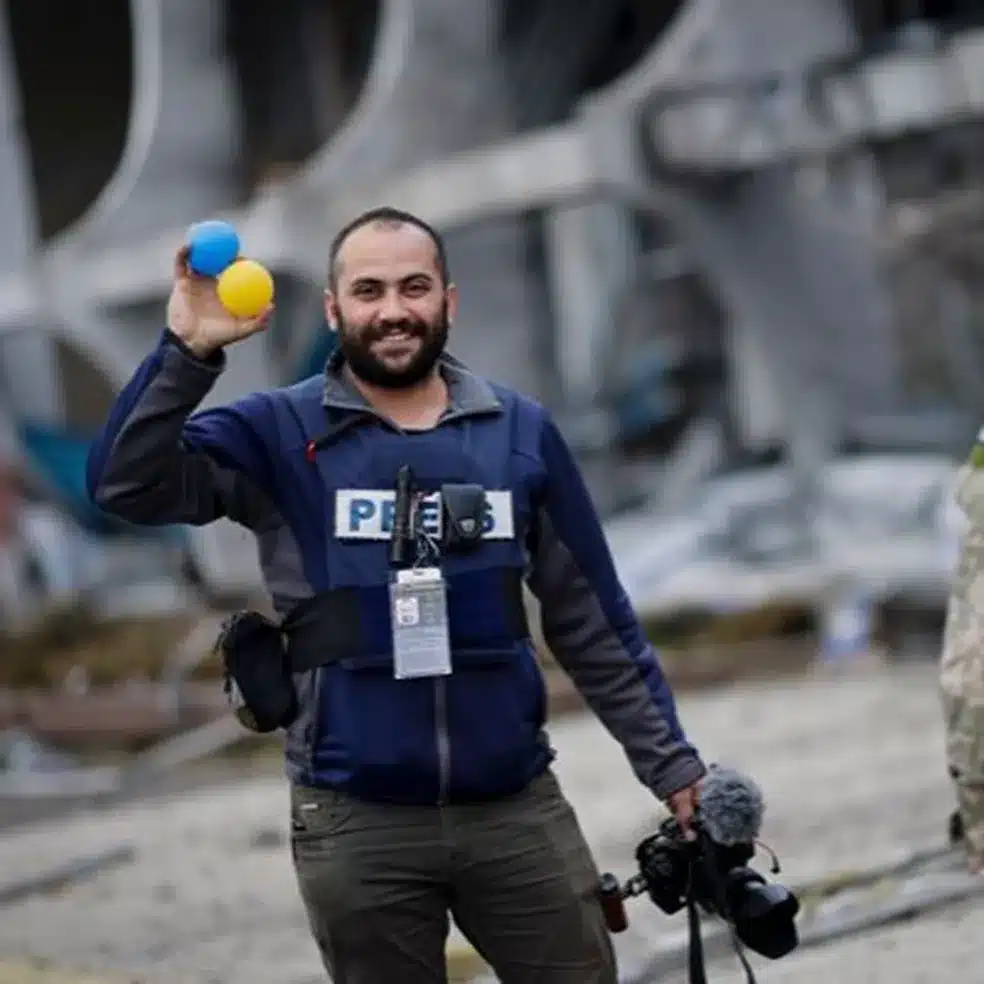Lebanese journalists and activists gathered on Sunday to demand justice for Issam Abdallah, a Reuters journalist who was killed one year ago when an Israeli tank shell struck while he was reporting on cross-border clashes in southern Lebanon. The incident, which occurred on October 13, 2023, also injured six other journalists, including AFP photographer Christina Assi and video journalist Dylan Collins.
Assi suffered severe injuries and later underwent a leg amputation, spending five months in intensive care. Investigations have indicated that an Israeli tank was responsible for the attack, a claim Israel has consistently denied, asserting that it does not target civilians, including journalists.
On Sunday, friends and colleagues shared photos of Abdallah and his work. Legal Agenda, a non-governmental organisation, highlighted the ongoing impunity surrounding Abdallah’s killing, stating on social media: “A year after the killing of photographer Issam Abdallah, Israeli impunity continues.”

Lebanese rights group Maharat urged the international community to enforce treaties and resolutions designed to protect journalists. Journalist Salman Andary echoed this sentiment on social media, calling for “justice for Issam and for all the victims of this crime.” Economist Jad Chaaban pointed out that Abdallah was killed while covering a clearly marked press spot, accusing Israel of conducting mass executions with total impunity.
Since the escalation of conflict on September 23, over 1,200 people have reportedly been killed in Lebanon, and more than one million have been displaced. The Committee to Protect Journalists (CPJ) recently condemned the lack of accountability for Israel regarding Abdallah’s death. CPJ chief executive Jodie Ginsberg stated that, despite extensive evidence suggesting a war crime, Israel has faced no accountability for targeting journalists.
The journalists were working near the border village of Alma al-Shaab, a site of frequent clashes between the Israeli military and Hezbollah forces. An AFP investigation conducted in December concluded that a tank shell, exclusive to the Israeli army, was fired during the attack. A separate Reuters inquiry, supported by findings from the Netherlands Organisation for Applied Scientific Research (TNO), determined that two Israeli tank rounds were fired from the same position across the border, with TNO’s final report suggesting that an Israeli tank crew likely opened fire on the journalists with a machine gun.
Following the incident, an Israeli military spokesman expressed condolences, stating, “We are very sorry for the journalist’s death,” while adding that Israel was “looking into” the matter without accepting responsibility.


